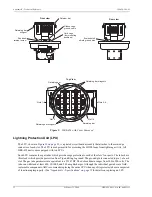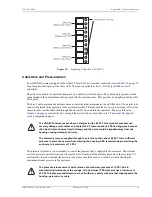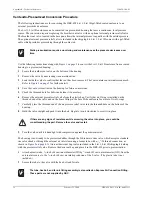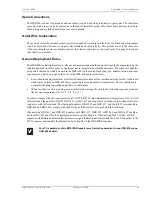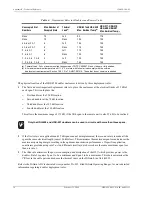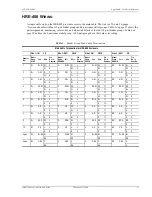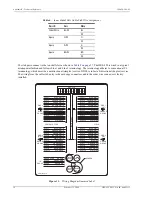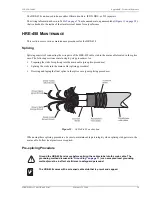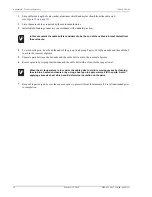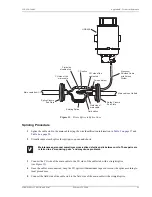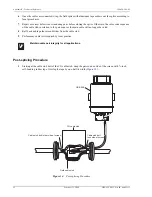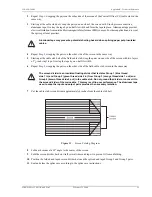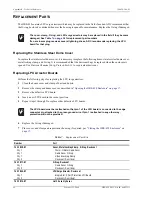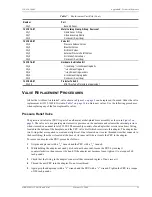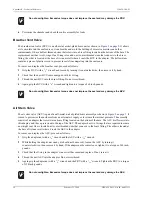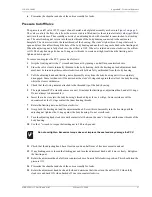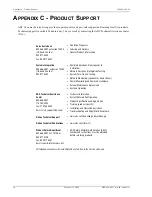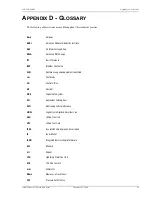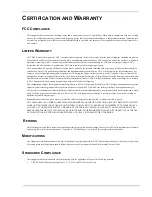
Appendix B - Technical Reference
150-458-100-05
36
February 23, 2000
HRE-458 List 1, List 1B, and List 2
6
Pressurize the chamber and check the entire assembly for leaks.
Breather Vent Valve
The breather vent valve (BVV) is an all-metal, nickel-plated brass unit as shown in
. It allows
air to circulate into the enclosure so it can breathe and avoid the buildup of excessive moisture and other
contaminants. It has a hollow-threaded stem that screws into a brass fitting located on the bottom of the base. The
replacement unit has two O-rings. One O-ring is located on its outer threaded stem that connects to the brass
fitting; the other is located at the base of its inner well where it seals the BVV to the adapter. The hollow stem
contains a piece of plastic screen to prevent insects from migrating into the enclosure.
To remove and replace the breather vent, proceed as follows:
1
Grip the BVV with a
3
/
4
” wrench and loosen by turning it counterclockwise, then remove it by hand.
2
Check that the new BVV came equipped with its O-ring.
3
Thread the new BVV into the brass fitting. Do not crossthread.
4
Again grip the BVV with a
3
/
4
” wrench and tighten to a torque of 60 inch-pounds.
Air Stem Valve
The air stem valve (ASV) is part of an all-metal, nickel-plated brass assembly as shown in
is used to pressurize the enclosure from an external air supply or to release the internal pressure. The assembly
consists of an adapter that screws into a brass fitting located on the bottom of the base. The ASV itself screws into
this adapter, and the cap screws onto the top of the ASV. The adapter has two O-rings that are required to create
an airtight seal. One is located on its outer threaded stem that connects to the brass fitting. The other is located at
the base of its inner well where it seals the ASV to the adapter.
To remove and replace the ASV, proceed as follows:
1
Grip the adapter nut with a
3
/
4
” wrench and the ASV with a
7
/
16
” wrench.
2
While holding the adapter nut steady (it should not be moved), loosen the ASV by turning it
counterclockwise, then remove it by hand. If the adapter nut becomes loose, tighten it to a torque of 60 inch-
pounds.
3
Check that the O-ring in the adapter’s inner well has remained in place. If not, reseat it.
4
Thread the new ASV into the adapter. Do not crossthread.
5
Again grip the adapter nut with a
3
/
4
” wrench and the PRV with a
7
/
16
” wrench. Tighten the PRV to a torque
of 120 inch-pounds.
Do not overtighten. Excessive torque does not improve the seal and may damage the PRV.
Do not overtighten. Excessive torque does not improve the seal and may damage the BVV.
Do not overtighten. Excessive torque does not improve the seal and may damage the ASV.

